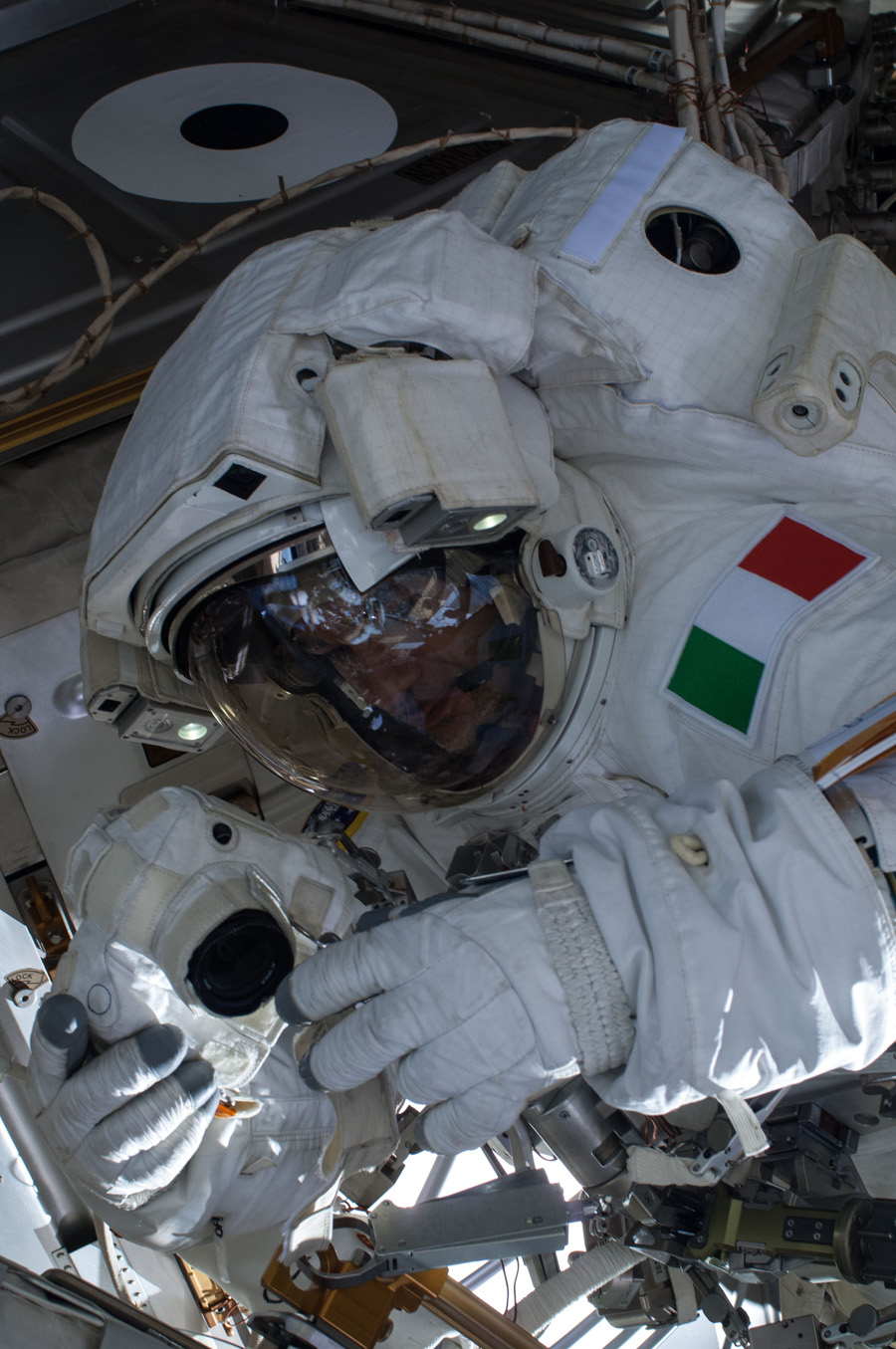Spacesuit Water Leak Highlights Spacewalk Dangers

A mysterious water leak that forced NASA to abort a spacewalk on Tuesday (July 16) shows just how perilous it can be to venture outside the protective confines of the International Space Station.
Tuesday's two-person spacewalk was supposed to last 6.5 hours, but mission controllers called it off after just 92 minutes when water began collecting in the helmet of European Space Agency astronaut Luca Parmitano.
The leak impaired Parmitano's communications system and, if allowed to progress further, could have choked or drowned him during the spacewalk, NASA officials said. [See photos from NASA's aborted spacewalk of July 16]
"I would say today was certainly a very serious issue," lead spacewalk officer Karina Eversley told reporters Tuesday.
Extravehicular activities (EVAs) like the one undertaken Tuesday by Parmitano and NASA astronaut Chris Cassidy are complicated maneuvers with many elements of risk, NASA officials said.
A micrometeoroid strike could breach an astronaut's spacesuit, for example, exposing him or her to the vacuum of space. Or a key system could suffer some sort of malfunction, as happened Tuesday, threatening a spacewalker's ability to communicate, breathe or navigate back to safety.
Every spacewalk is planned out in minute detail to minimize the risks while giving astronauts the best chance of completing their scheduled tasks, officials said. But just getting everyone back inside the International Space Station safely is the primary goal every time, they added.
Breaking space news, the latest updates on rocket launches, skywatching events and more!
"We don't take EVAs lightly at all," said spacewalk flight director David Korth. "Everyone that goes out the door — we try and do our best to meet the requirements, but when the crew is back in at the end of the day, that's success."
NASA officials are still investigating the cause of Tuesday's leak, which introduced 34 to 51 ounces (1 to 1.5 liters) of water into Parmitano's spacesuit, with most of it gathering in his helmet. The number one suspect at the moment is the suit's cooling system, Eversley said, adding that the problem is a new one for spacewalk officers.
"We have not seen a situation like this before," she said. "Overall, I would have to say that our [space]suits are very robust. They're well designed, and we don't very often have problems with them."
Glitches have cut spacewalks short before. In 2004, for example, a pressurization problem with NASA astronaut Mike Fincke's oxygen tank ended an EVA after a mere 14 minutes.
Tuesday's spacewalk was designed to help prepare the orbiting laboratory for the arrival of a new Russian module later this year and perform a variety of maintenance and repair work. The tasks will be completed at a later date, after engineers determine the cause of the water leak, NASA officials said.
Follow Mike Wall on Twitter @michaeldwall and Google+. Follow us @Spacedotcom, Facebook or Google+. Originally published on SPACE.com.

Michael Wall is a Senior Space Writer with Space.com and joined the team in 2010. He primarily covers exoplanets, spaceflight and military space, but has been known to dabble in the space art beat. His book about the search for alien life, "Out There," was published on Nov. 13, 2018. Before becoming a science writer, Michael worked as a herpetologist and wildlife biologist. He has a Ph.D. in evolutionary biology from the University of Sydney, Australia, a bachelor's degree from the University of Arizona, and a graduate certificate in science writing from the University of California, Santa Cruz. To find out what his latest project is, you can follow Michael on Twitter.
